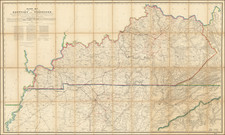Search
Lorenzo I. Sitgreaves, born on March 15, 1810, in Easton, Pennsylvania, was a notable U.S. Army officer and a key member of the Corps of Topographical Engineers. His mother was Mary (née Kemper), whose father, Daniel Kemper, was a colonel in the American Revolutionary War. Sitgreaves graduated from the United States Military Academy in West Point, New York, in 1832, ranking 25th in his class. He began his military career as a Brevet 2nd Lieutenant in the 1st Regiment of Artillery.
Early Military Career Sitgreaves' early military service included the Black Hawk Expedition of 1832 and assignments in various garrisons. He was promoted to Second Lieutenant in 1833 but resigned his commission in 1836 to pursue civil engineering.
Return to Military Service In 1838, he reenlisted as a 2nd Lieutenant in the Corps of Topographical Engineers. His work included road construction in Wisconsin, a survey of Sault Ste. Marie, and work on the U.S.-Texas border, promoting him to 1st Lieutenant in 1840.
Mexican-American War During the Mexican-American War, Sitgreaves participated in General John E. Wool's march from San Antonio to Chihuahua and fought in the Battle of Buena Vista. His bravery earned him a promotion to Brevet Captain in 1847. Post-war, he led the Boundary Survey of the Creek Indian Territory and resumed his duties at the Topographical Bureau in Washington, D.C.
Sitgreaves Expedition, 1851 In 1851, Sitgreaves embarked on an expedition down the Zuni and Colorado rivers, which was the first systematic survey of the area between Zuñi Pueblo and the Colorado River. The goal was to find a route to California. The expedition, completed between September and November 1851, resulted in a significant report published in 1853. Following this, he was promoted to captain.
Personal Life Sitgreaves married Lucy Ann Jesup, daughter of Thomas S. Jesup, in 1854, and they had two daughters, Mary Jesup and Lucy.
Later Career His later career included serving as a Light-House Inspector in Detroit and as a Light-House Engineer in Baltimore. He took a sick leave in 1859 and returned to service during the Civil War as a Mustering Officer and Superintendent of Volunteer Recruiting Service. He was promoted to Major in 1863 and Lieutenant-Colonel in 1864.
Retirement and Death After retiring in 1866 due to health issues, Sitgreaves was involved in settling Ohio and Indiana war claims. He passed away on May 14, 1888, in Washington, D.C., and was laid to rest at Oak Hill Cemetery. Sitgreaves' legacy is defined by his significant contributions to topographical engineering and his distinguished military service.

